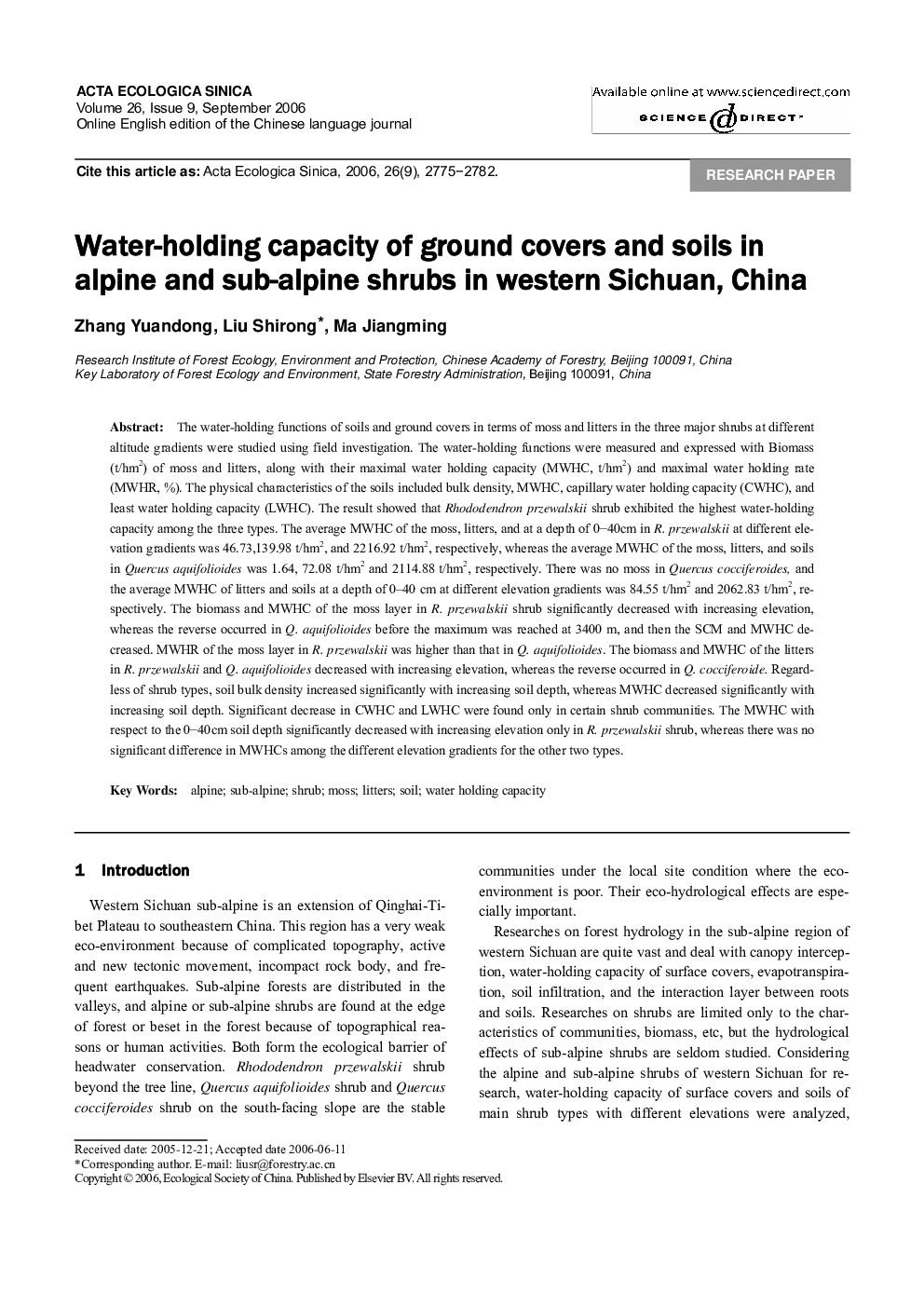| Article ID | Journal | Published Year | Pages | File Type |
|---|---|---|---|---|
| 4380571 | Acta Ecologica Sinica | 2006 | 7 Pages |
The water-holding functions of soils and ground covers in terms of moss and litters in the three major shrubs at different altitude gradients were studied using field investigation. The water-holding functions were measured and expressed with Biomass (t/hm2) of moss and litters, along with their maximal water holding capacity (MWHC, t/hm2) and maximal water holding rate (MWHR, %). The physical characteristics of the soils included bulk density, MWHC, capillary water holding capacity (CWHC), and least water holding capacity (LWHC). The result showed that Rhododendron przewalskii shrub exhibited the highest water-holding capacity among the three types. The average MWHC of the moss, litters, and at a depth of 0–40cm in R. przewalskii at different elevation gradients was 46.73,139.98 t/hm2, and 2216.92 t/hm2, respectively, whereas the average MWHC of the moss, litters, and soils in Quercus aquifolioides was 1.64, 72.08 t/hm2 and 2114.88 t/hm2, respectively. There was no moss in Quercus cocciferoides, and the average MWHC of litters and soils at a depth of 0–40 cm at different elevation gradients was 84.55 t/hm2 and 2062.83 t/hm2, respectively. The biomass and MWHC of the moss layer in R. przewalskii shrub significantly decreased with increasing elevation, whereas the reverse occurred in Q. aquifolioides before the maximum was reached at 3400 m, and then the SCM and MWHC decreased. MWHR of the moss layer in R. przewalskii was higher than that in Q. aquifolioides. The biomass and MWHC of the litters in R. przewalskii and Q. aquifolioides decreased with increasing elevation, whereas the reverse occurred in Q. cocciferoide. Regardless of shrub types, soil bulk density increased significantly with increasing soil depth, whereas MWHC decreased significantly with increasing soil depth. Significant decrease in CWHC and LWHC were found only in certain shrub communities. The MWHC with respect to the 0–40cm soil depth significantly decreased with increasing elevation only in R. przewalskii shrub, whereas there was no significant difference in MWHCs among the different elevation gradients for the other two types.
